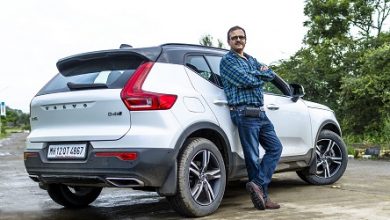
In an interview with Telematics Wire, Vinay Piparsania, Consulting Director – Automotive, Counterpoint Research shares his views about the industry during and post COVID-19.
What will be the impact of the slowdown in the automotive industry and what do you expect as a short term impact on business/industry?
With the COVID-19 pandemic breaking out in China at the beginning of the year, vulnerabilities in the global automotive supply chain were exposed, with nearly 85% of the world’s supplies dependent on China in some way or another. The ripple effect was felt globally, and most auto manufacturing came to a sudden halt as lockdowns shut plants at home.
Even before the pandemic, the industry was stressed financially from increased emissions related upgrade costs and increased R&D investments in emerging technologies. As manufacturing operations resume, the added burden of COVID-19 safety protocol compliance, plummeting demand, and inefficiencies from underutilized capacity are further exposing OEMS and suppliers to severe liquidity issues. Further disruptions are likely to continue, bringing the possibility of major consequences to specific segments of the auto ecosystem.
With most regions remaining vulnerable to lowered customer demand, Counterpoint expects substantial volume drops in 2020. For example, in the major markets of North America and Europe, we expect base case sales of 13.4 m and 13.6 m, a YoY decline of 24.1 % and 25.7%, respectively.
In India, with the extended lockdown of all showrooms and manufacturing facilities, the Indian auto industry saw zero production and sales in passenger and commercial vehicles (PVs and CVs) in April, which followed March’s 50% and 88% drop in PVs and CVs, respectively.
The largest carmaker in India, Maruti Suzuki, only managed export shipments of 632 units during the month with port operations having been partially resumed. Similarly, exports of Hyundai and Mahindra stood at 1,341 and 733 units respectively last month, while having reported zero domestic production and sales. Compared to April 2019, when the country had reports total PV sales at around 320,000 and exports at 56,800 unit, the current lockdown will surely leave some deep economic wounds. With the partial opening of a few plants allowed in May subject to strict safety, sanitization and social distancing protocols, every auto manufacturer is now frantically working with dealers and supplier partners to rebuild the ecosystem.
The auto industry in India has already undergone considerable slowdown over the past 12-18 months due to structural changes beginning with goods and services tax (GST), shift to shared mobility, axle-load reforms, the BS-IV to BS-VI transition and liquidity crunch. With no clear definitive indication of when the social and economic conditions in the country will get back to normal, Counterpoint is holding to its base case scenario of 20% YoY decline in auto sales, and a worst-case outlook to a 35% YoY decline should the GDP growth outlook become negative.
Do you anticipate reduction in R&D spend by automotive OEMs?
Yes. It is most likely that as an immediate and urgent response, companies will resort to redeploying their R&D funding to sustain core operations, potentially setting back the progress they have made on alternative fuel and mobility technologies by several months to a year. Some companies may even choose to take a strategic call to discontinue unstainable models and exit certain vehicle categories altogether.
In our view, as the world and customers moves towards a new post COVID-19 reality, auto companies will look to reprioritize their focus on upgrading plant automation, manufacturing productivity and efficiency with Industry 4.0, and putting further resources in developing online sales channels – delivering digital showrooms, VR solutions, and touchless delivery.
Will pandemic impact the introduction of new technologies in vehicles to be launched?
Certainly the advancements in electric vehicles is one of them.
In the short term, current oil prices will delay adoption of EV platforms by customers. However over the medium and longer term there will continue to be concerted efforts by Government and stakeholders to drive EV adoption and growth in India. With automakers and suppliers currently already deeply invested in conventional internal combustion engine technologies, they would surely reconsider and avoid diverting any funds towards the electric vehicles segment at this time with the imminent economic downturn.
It has been reported that Automobile OEMs in India have already invested around Rs 40,000 crore (US$ 5.3 billion) to upgrade their facilities and products, while the auto component industry has invested another Rs 30,000 crore (US$ 4.0 billion) to develop mandated BS-VI emissions technology. Electric cars could take a back seat for at least one year with the current disposition to revert and hold onto conventional ICE technologies.
In these uncertain times, consumers are cutting discretionary expenses and savings are being channelized to health and hygiene areas. Consumers will look to postpone big-ticket purchases, especially in the personal mobility space, and opt for affordable options instead. Traditional cars and two-wheelers are 30 to 40 percent cheaper than their electric counterparts.
Will there be a shift in buying pattern/behaviour?
The COVID-19 outbreak and resulting economic uncertainty has dampened consumer demand in the short term, leading to declining new vehicle sales with deferred spending on nonessential items. In the long run, these forces could also trigger a shift in consumer preferences, as experienced in the past with earlier global events having significant economic impacts e.g., wars, oil price volatility, bank failures etc.
With purchases in many countries happening mostly online while under lockdowns, potential car buyers have become familiar and comfortable to the idea of buying cars online too. Auto dealers have enhanced their online selling skills, using unconventional ways to communicate with car-buyers, such as Zoom video calls and WhatsApp for instance. Initial industry feedback has been somewhat surprising, revealing an overall satisfactory buying experience, comparable to walk-ins. We are seeing more and more dealers ramping up their websites to help buyers pre-select and book desired models, process payments and complete related paperwork digitally.
While car sales have traditionally been a single, decentralised sales channel, i.e. automakers/importers sell cars to dealers, and dealers to consumers; COVID-19 is rapidly shifting this dynamic towards going directly digital with the OEMs.
Mercedes Benz has announced plans to convert 25% of its global sales online by 2025, and longer term, it is likely some automakers may consider adopting a Tesla-like business model, going fully online and delivering directly, removing the dealership from the equation.
Counterpoint analysts believe though that many car buyers will continue to want a bricks and mortar experience, preferring to kick the tires and test-drive for themselves before buying. Dealerships will continue to account for a vast majority of cars sold globally during the next decade.
However, with social distancing becoming a way of life, contactless delivery will undoubtedly become an important delivery approach for almost everything, including cars.
What policy change can revive the demand for automotive? Will vehicle scrap policy (yet to be announced) be a game-changer in the Indian context?
An immediate relief measure which the government could consider is reducing GST for automobiles, at least for a limited period. As the demand ramps up, the revenue shortfall could be recovered.
Other policy support would be the deferment of certain regulatory norms and making available working capital at subsidised rates to automotive suppliers and dealers, while allowing a smooth seamless transportation of goods across the country once the lockdown is lifted. These would help resolve any automotive supply chain disruptions.
Yes, a well-defined vehicle scrappage policy covering all segments, including cars and two-wheelers and not just commercial vehicles, can help create an industry of its own with a business opportunity reported to be in the range of $6 billion (Rs 45,000 crore) annually. It would generate employment opportunities, contributing to economic growth, and has been a consistent ask by automotive stakeholders in the country as a critical factor to facilitate revival of new vehicle demand.
In addition recycling of metals like steel, copper and aluminium from scrapped vehicles could reduce the imports of such commodities. Ensuring older vehicles are off the road will help lower pollution levels in the country, with modern full efficient and low emission vehicles replacing them.
Should the Indian scrappage policy be well defined and rolled out immediately, Counterpoint estimates that around 10 million vehicles could go off roads by 2022 and nearly 20 million by 2025.
Auto manufacturers, namely Maruti Suzuki and Mahindra & Mahindra have already ventured into the recycling business and there are reportedly quite a few start-up enterprises queuing to enter the space. The challenge is that scrap yards will take time to build.
Will the crude oil price fluctuation impact the government push for electric vehicles?
In the Indian context, in spite of the significant drop in crude oil prices globally, the final price of fuel to the consumer has not changed at all with the Government hiking excise duty correspondingly to compensate for the drop.
While in the short term, the current CIVID-19 negative economic impacts will delay purchase of new vehicles per se, we believe there will continue to be a concerted effort by government and other stakeholders to drive EV growth in India over the medium to long term .
While the EV segment in the country remains nascent and relatively small compared to traditional ICE segments, EVs reported a 20% increase in sales in FY20 compared to FY19. The bulk volumes however are from e2Ws, with the incentives provided by the government favouring this category. Going forward, further growth is expected to come from the e-rickshaws and e-autos segment.
There have already been significant announcements in 2020 aimed at accelerated EV adoption. From a tax point of view, the GST council has already reduced this year rates from 12% to 5% for e-vehicles, and from 18% to 5% for EV chargers. Policy schemes like FAME II (Faster Adoption and Manufacturing of Hybrid and Electric Vehicles) have been enhanced to spur indigenous manufacturing and develop local technology by OEMs to make vehicles more affordable.
In the absence of government support, what should the industry do to revise the automotive demand?
The Indian automobile sector, was already undergoing a prolonged turbulent phase, experiencing a slowdown well before the virus outbreak in the country. Stringent environmental and safety regulations, moderating economic growth, growing shared mobility, increasing insurance norms, large inventories at dealerships and cautious lending by financers, were all key factors already attributing to declining vehicle sales in the country.
With social distancing unlikely to disappear in the foreseeable future, e-commerce will become an important buying channel for almost everything, including cars. Automakers and dealers need to develop online sales strategy appealing to their customers and consistent with their brand experience An online presence is a ‘must have’ feature, with customers choosing on-line as the first point of connecting with the brand.
Dealers are already enhancing their online selling capabilities and using inexpensive ways to communicate with car-buyers, through Zoom calls and WhatsApp for instance. Initial industry feedback has been somewhat surprising, revealing an overall better buying experience compared to walk-ins. Dealers lacking online capabilities are now partnering with third-party apps to connect and communicate with car-buyers online. Growth of comparison and buying sites like Cars.com, Carvana and Vroom provide a wealth of information like availability, specifications, comparisons and video reviews to aid buying decisions. Price comparisons influence buying behaviour by helping consumers make informed decisions around costs.
Counterpoint Research also sees a rising trend over the next few years around health-related features being requested by car buyers – especially amongst vulnerable older age groups, those spending considerable amounts of time in their cars, and drivers and passengers of shared mobility and other public transport options. Recent features developed by OEMs specifically for preventing the ingress of virus and bacterial contagions like COVID-19 include :
A N95 certified Intelligent Air Purification System introduced by Geely Motors in China.
Jaguar Land Rover is working on adding a special ultraviolet (UV-C) light sanitizing unit
MG Motors has partnered with Singapore based Medklinn for cabin and surfaces sterilisation
Such recently introduced health features, along with other basic features, could prove to be a key differentiator and consideration for customers. Additional safeguards combatting bacteria and viruses could further improve brand image, conveying innovation, safety and customer-centricity.
Moving forward, working in collaboration, through partnerships, alliances and joint ventures with stakeholders within the ecosystem will be the key strategic option to be considered by automakers looking to navigate the turbulent times ahead.
Published in Telematics Wire





